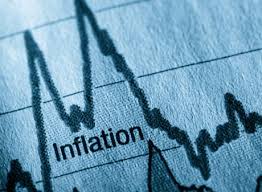
The recent slowdown in the Philippine inflation rate to 1.9%, the lowest in four years, has brought a palpable sense of relief to consumers. This decline, primarily due to a reduced rise in the prices of essential goods like food, transport, housing, and utilities, is a welcome change that could have broader implications for economic stability.
The recent figures released by the Philippine Statistics Authority show a marked decrease in the inflation rate, a welcome change after a prolonged period of high inflation rates. This easing of inflation provides a glimmer of hope for economic growth and sets the stage for potential economic stability in the coming months.
Furthermore, the primary drivers behind this decline include a significant drop in food prices. For instance, the cost of staples such as rice, vegetables, and meat has notably reduced. Consequently, families can stretch their budgets further, allowing them to allocate funds to other essential needs. In addition, transportation costs have also stabilized, contributing to the overall decrease in the inflation rate.
In addition to food and transport, housing and utilities play a crucial role in the inflation equation. Housing cost increases have recently slowed, and utility prices have remained relatively stable. This is particularly important for low- and middle-income households, who often spend a significant portion of their income on these essential services. As a result, combining these factors has led to a more favorable economic environment for many Filipinos.
Analysts believe the government’s efforts to stabilize prices have significantly contributed to this positive trend. Initiatives aimed at improving agricultural productivity and reducing transportation costs have directly impacted food prices. The government’s commitment to maintaining economic stability despite global economic challenges has helped reassure consumers and investors alike.
However, while this news is promising, experts caution that the inflation rate may remain low. Global economic conditions, including fluctuations in oil prices and supply chain disruptions, could shortly alter the inflation trajectory. As such, maintaining vigilance and adaptability will be crucial for both policymakers and consumers.
In conclusion, the recent slowdown in the Philippine inflation rate to 1.9% offers a much-needed respite for consumers and businesses. Driven by a lower rise in food, transport, housing, and utilities, this development not only eases the financial burden on families but also sets the stage for potential economic growth. As the country navigates through local and global economic challenges, it will continue to sustain this positive trend and ensure that it translates into long-term benefits for all Filipinos. Ultimately, the hope is that this decline in inflation will foster a more stable and prosperous economic environment for the nation moving forward.




